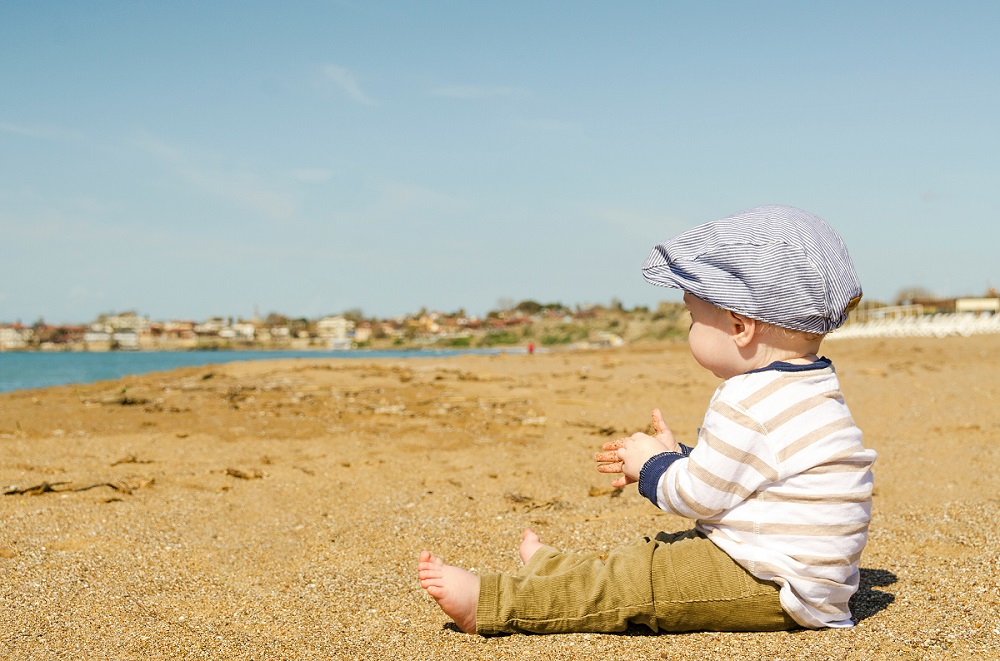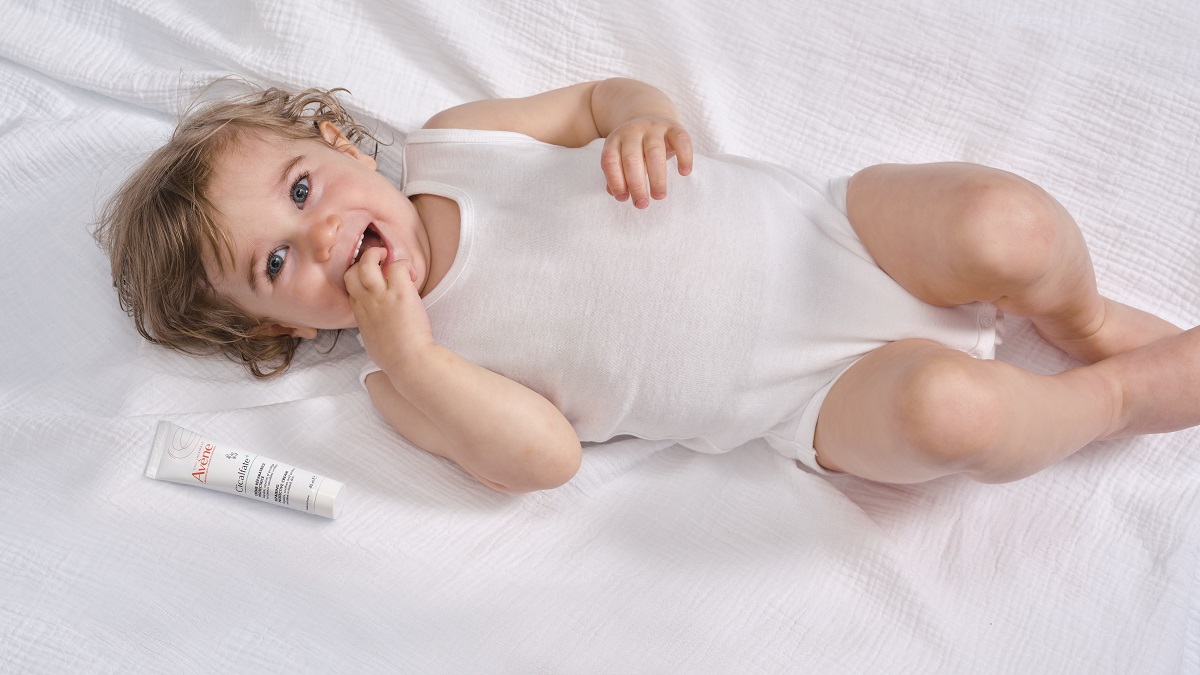Sensitive skin in babies
Sensitive skin in babies


Luckily there’s plenty you can do to keep your baby’s skin healthy and free from common problems such as nappy rash and eczema. Read on for some straightforward tips. 1,2
Back to top
Gentle bathing
Two to three baths a week are all that’s needed until babies start to crawl; more frequent bathing can dry out their skin. Instead, use a wet washcloth to regularly clean the areas that tend to get dirty the most: around the mouth, the nappy area, and the skin folds (e.g, armpits, neck creases). Start off with sponge baths, then move to traditional bathing once the umbilical cord stump falls off and heals. 1,2 Use lukewarm water and fragrance-free baby soap and shampoo, which should then be thoroughly rinsed off. Sensitive baby skin needs suitably sensitive products: those you are able to use safely on your own adult skin may be irritating when used on babies. Choose products from a range such as Baby Dove, which contains 100% skin-natural nutrients, and is designed to not only cleanse gently but also to replenish the skin’s protective moisture and lipids (fats). 1,2,3
Back to top
Regular nappy changes
It’s important to keep your baby’s bottom as clean and dry as possible to help prevent irritation and rash. Babies need a nappy change every two to four hours, and immediately after a bowel movement. Plain water and cotton wool or a soft cloth work well for clean-ups when a nappy is just wet. For more heavily soiled nappies, wipes are useful - but choose ones that are hypoallergenic and free of potentially irritating chemicals. 1 It’s a good idea to let your baby’s bottom air-dry every now and then. Place them on a waterproof sheet or a towel while they are going nappy-free. 1 Make sure the nappy fits snuggly, but should still be loose enough that it doesn’t chafe. If you use cloth nappies, give them an extra rinse after washing to remove any remaining detergent. Avoid fabric softeners and dryer sheets. 1 Also choose fragrance-free laundry detergent for washing baby clothing and bedclothes, which should be done regularly. 2 

Back to top
Moisturise wisely
It’s normal for newborns to have areas of dry skin; these usually resolve on their own. If the skin is so dry that it splits, try applying petroleum jelly. As babies get older, they often need an appropriate moisturiser: baby skin loses moisture up to five times faster than adult skin. Choose products that are free of fragrances, dyes and other harsh chemicals. Note that ”unscented” isn’t equivalent to “fragrance-free”: “unscented” products can still have a fragrance, which may be irritating to your child’s skin. 1,3
Back to top
Recognise common skin conditions
Nappy rash is redness and irritation in the nappy area, caused by a breakdown of the skin surface after being in contact with urine or faeces for a prolonged period. If your baby develops nappy rash, gently clean the area and apply a thick layer of zinc oxide cream or ointment after each nappy change - this forms a barrier against waste products. Allow some nappy-free time every day. If nappy rash doesn’t resolve in two to three days or worsens, consult your paediatrician. 1,2,4 Baby eczema is a common skin condition that causes patches of dry, bumpy, itchy and inflamed skin, most often on the face. Symptoms can persist for a couple of weeks each time there’s a flare-up. It is a chronic condition that can come and go throughout your child’s life. 5 To manage eczema, bathe your baby in lukewarm water for 5-10 minutes. Gently apply a mild cleanser to the rest of their skin, without rubbing, avoiding the areas with eczema. Pat dry immediately after bathing, but leave some water on the skin so it feels damp. 1 Eczema occurs because the protective barrier on the outermost layer of their skin has weakened and doesn’t function optimally. Moisture loss can worsen the symptoms. To help prevent this, apply a moisturiser designed specifically for babies such as Baby Dove’s Fragrance free lotion. This goes beyond basic moisturisation to offer a long-lasting moisture barrier for your baby’s skin. The best time to moisturise your baby’s skin is after a bath and several throughout the day when their skin appears dry. 3,5 At around a month old, your baby may develop cradle cap, a common rash which causes scalp scaling and redness. This will gradually resolve on its own, but washing your baby’s hair several times a week with mild baby shampoo, for example, Baby Dove Rich Moisture Shampoo, can help. Baby oil isn’t recommended because it allows build-up of scales on the scalp. 1,3
Back to top
Sun protection
- Keep your baby in the shade. Babies younger than six months especially should avoid direct sunlight as much as possible.
- Dress your baby in cool, long-sleeved shirts and pants, wide-brimmed hats and sunglasses with UV protection rating. Clothing labelled with an ultraviolet protection factor (UPF) offers additional protection against harsh solar rays.
- Choose water-resistance sunscreens with broad-spectrum protection (i.e. against both UVA and UVB rays), and SPF (sun protection factor) of 30 or higher. Sunscreens containing titanium dioxide or zinc oxide are less likely to irritate your baby’s skin than those with ingredients such as avobenzone, octinoxate and oxybenzone. Reapply every two hours or immediately after swimming - no sunscreen is truly “waterproof”. Minimise sunscreen use on children younger than six months old. However, if adequate shade or clothing aren’t available, you can apply a small amount of sunscreen to exposed skin. 1,2

Medical References
- Levine, H. Web MD. Taking Care of Baby's Sensitive Skin. (2023). Retrieved from:https://www.webmd.com/parenting/baby/skin-care-right-things
- American Academy of Dermatology. How to care for your baby's delicate skin, hair, and nails. (2021). Retrieved from: https://www.aad.org/news/care-for-baby-delicate-skin-hair-nails
- Dove. Dove Baby range. Retrieved from: https://www.dove.com/za/baby/collections.html
- NIDirect Government Services. Nappy rash. Retrieved from: https://www.nidirect.gov.uk/conditions/nappy-rash
- Cleveland Clinic. Baby Eczema. (2022). Retrieved from: https://my.clevelandclinic.org/health/diseases/23408-baby -eczema
November 17, 2023
Content Disclaimer:
You understand and acknowledge that all users of the Dis-Chem website or app are responsible for their own medical care, treatment, and oversight. All of the content provided on the website, are for INFORMATIONAL PURPOSES ONLY and DOES NOT CONSTITUTE THE PROVIDING OF MEDICAL ADVICE and is not intended to be a substitute for independent professional medical judgment, advice, diagnosis, or treatment. The content is not intended to establish a standard of care to be followed by a user of the website. You understand and acknowledge that you should always seek the advice of your physician or other qualified health provider with any questions or concerns you may have regarding your health. You also understand and acknowledge that you should never disregard or delay seeking medical advice relating to treatment or standard of care because of information contained in or transmitted through the website. Medical information changes constantly. Therefore the information on this website or on the linked websites should not be considered current, complete or exhaustive, nor should you rely on such information to recommend a course of treatment for you or any other individual. Reliance on any information provided on this website or any linked websites is solely at your own risk.








